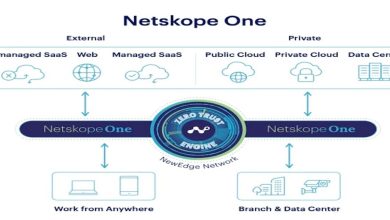Wireless Logic Releases Industry Blueprint for Building Cyber-Resilient IoT Network
Wireless Logic’s new white paper highlights nine foundational best practices for building cyber-resilient IoT networks in mission-critical deployments.

Wireless Logic has published a new white paper titled ‘Maximising Uptime for IoT’, providing a detailed guide on building and operating IoT networks that are resilient by design.
With the global proliferation of connected devices and increasing regulatory scrutiny, the paper highlights network resilience as a critical but often overlooked factor in successful deployments and explains how enterprises can take a more strategic approach to connectivity design, security and operational planning.
Best Practices to Future-Proofing IoT Connectivity
IoT networks are under increasingly greater pressure to perform, especially in challenging conditions. In the white paper, Wireless Logic explores how early design decisions directly shape long-term reliability, availability and compliance – and why resilience must be built in from day one. It delivers a strategic blueprint for embedding resilience from the ground up, offering nine foundational best practices Communication Service Providers (CSPs) and enterprises must adopt to ensure robust, compliant, and scalable IoT deployments:
- Infrastructure Resilience – Design for redundancy using multi-network roaming, geo- distributed packet gateways, and automated failover to avoid single points of
- Security – Enforce Zero Trust Architecture with multi-factor authentication (MFA), role- based access control (RBAC), and end-to-end encryption to protect data in motion and at
- Disaster Recovery – Implement robust DR plans with tested RTOs and 3-2-1 backup strategies to enable rapid, assured
- Monitoring s Predictive Maintenance – Leverage real-time observability tools and AI- driven analytics to detect anomalies, anticipate failures, and mitigate
- Automation s Orchestration – Use infrastructure-as-code and CI/CD pipelines to deploy updates quickly, safely, and at scale — with self-healing capabilities to minimise
- Service Performance Optimisation – Apply network-level optimisations including edge computing, API rate limiting, and content delivery strategies to reduce latency and
- Change Management s Governance – Maintain rigorous version control, audit trails, and compliance frameworks aligned with standards like ISO 27001 and
- Customer Communication s Support – Provide 24/7 support, incident transparency, and proactive alerting to empower customers during
- Sustainability – Optimise energy efficiency across infrastructure through virtualisation, containerisation, and low-power hardware to meet environmental
“In a region as diverse and digitally ambitious as Asia Pacific, downtime isn’t just inconvenient — it can derail critical services, from healthcare to energy,” said Simon Trend, Managing Director, Americas, APAC and MENA, Wireless Logic. “Yet resilience is still too often treated as a bolt-on. To meet rising regulatory scrutiny and customer expectations, organisations must architect IoT deployments with resilience baked in — from SIM strategy to network failover — so they can adapt, recover, and scale without disruption.”
Resilience in Action: Case Studies from Healthcare, Energy, and Mobility
Alongside the technical steps needed to deliver high availability, Wireless Logic explores how to enable faster, automated recovery should outages occur. With rising cyber threats, stricter regulations and growing concerns over ownership costs, the guide also urges enterprises to treat connectivity as a core part of their IoT strategy rather than an afterthought.
Case studies from sectors like healthcare, mobility, energy and infrastructure show how these principles work in practice and reinforce the vital role connectivity service providers play in building secure, scalable networks that can go the distance.
“You can’t retrofit resilience,” said Toby Gasston, Mobile Core Product Lead at Wireless Logic. “The strongest deployments are built on early decisions around SIM strategy, network access and device behaviour. Those choices shape how well an IoT estate holds up when things don’t go to plan – whether it’s a service failure, a usage spike or a shift in regulation.”
To download the white paper, please visit: https://wirelesslogic.com/guide/uptime




